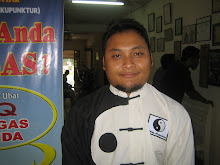Use of Acupuncture for Pain
Acupuncture, among the oldest healing practices in the world, is part of traditional Chinese medicine. Acupuncture practitioners stimulate specific points on the body—most often by inserting thin needles through the skin. In traditional Chinese medicine theory, this regulates the flow of qi (vital energy) along pathways known as meridians.According to the 2007 National Health Interview Survey, which included a comprehensive survey of CAM use by Americans, 1.4 percent of respondents (an estimated 3.1 million Americans) said they had used acupuncture in the past year. A special analysis of acupuncture data from an earlier NHIS found that pain or musculoskeletal complaints accounted for 7 of the top 10 conditions for which people use acupuncture. Back pain was the most common, followed by joint pain, neck pain, severe headache/migraine, and recurring pain.
What the Science Says About Acupuncture for Pain
Acupuncture has been studied for a wide range of pain conditions, such as postoperative dental pain, carpal tunnel syndrome, fibromyalgia, headache, low-back pain, menstrual cramps, myofascial pain, osteoarthritis, and tennis elbow.Overall, it can be very difficult to compare acupuncture research results from study to study and to draw conclusions from the cumulative body of evidence. This is because studies may use different acupuncture techniques (e.g., electrical vs. manual), controls (comparison groups), and outcome measures.
One particularly complex factor in acupuncture research is choosing the controls for a clinical trial.
The choice depends in part on whether the researchers want to study a particular aspect of acupuncture (e.g., effects on the brain) or to determine whether acupuncture is useful compared with other forms of care. Examples of control groups include study participants who receive no acupuncture, simulated acupuncture (procedures that mimic acupuncture, sometimes also referred to as "placebo" or "sham"), or other treatments (in addition to or in place of acupuncture or simulated acupuncture).
An emerging theme in acupuncture research is the role of the placebo. For example, a 2009 systematic review of research on the pain-relieving effects of acupuncture compared with placebo (simulated) or no acupuncture was inconclusive.
The reviewers found a small difference between acupuncture and placebo and a moderate difference between placebo and no acupuncture; the effect of placebo acupuncture varied considerably, and the effect of acupuncture appeared unrelated to the specific kind of placebo procedure used. All of the study participants received standard care, typically consisting of analgesic drugs and physical therapy.
The following sections summarize research on acupuncture for a variety of pain conditions, including those reported by NHIS respondents who had used acupuncture. In general, acupuncture appears to be a promising alternative for some of these pain conditions; however, further research is needed.





4 comments:
Acupuncture is an ancient art of healing; it is widely popular throughout the world now it is adopted as an alternative therapy. Now along with modern techniques it is called electro acupuncture. Now days acupuncture pain relief is very popular among populaces.
Chronic pain must be treated by pain specialist as it could lead to a more serious situation. Pain clinic in NJ has some of the best doctors helping to overcome the pain through a holistic approach.
Keep posting like this it’s really very good..At Dr. Park Acupuncture we not only treat the symptoms, but also work with you to identify and treat the root cause of the symptoms.
Acupuncture in Columbia MD
Very usefull article about acupuncture, keep it up
Acupuncture in Chennai
Post a Comment